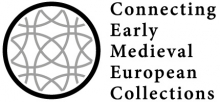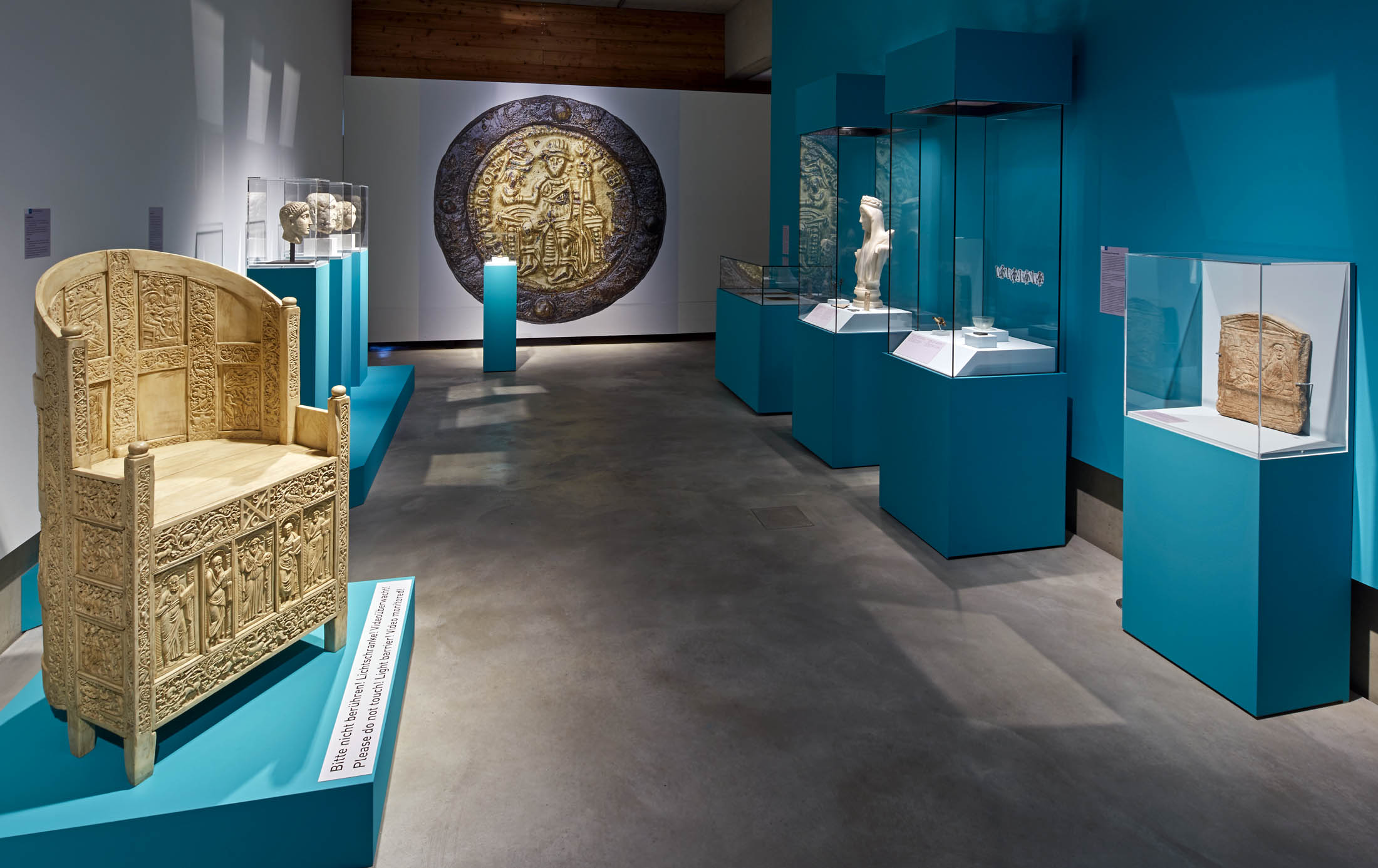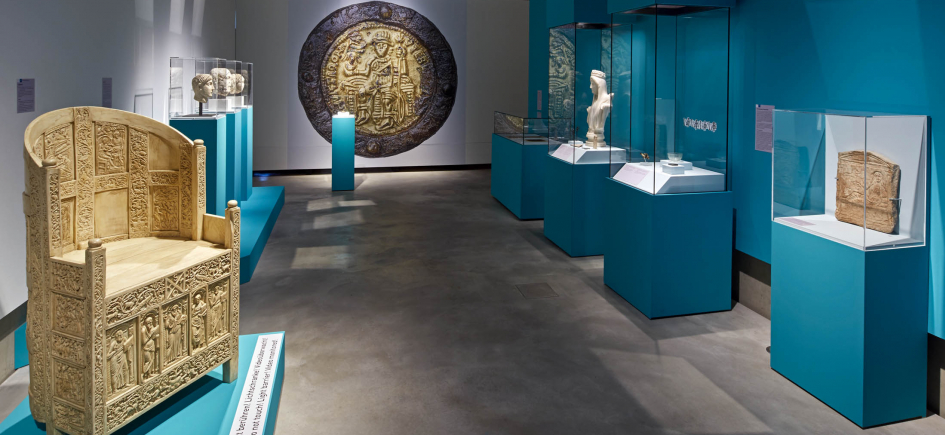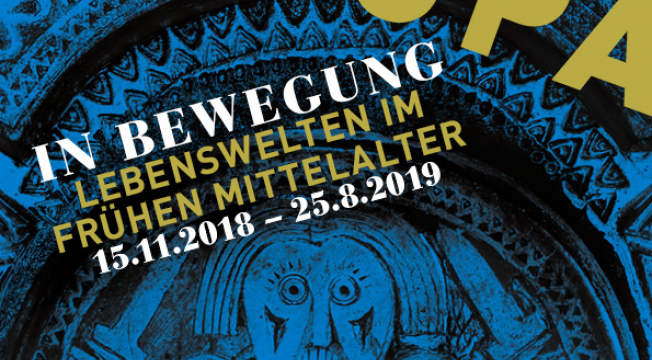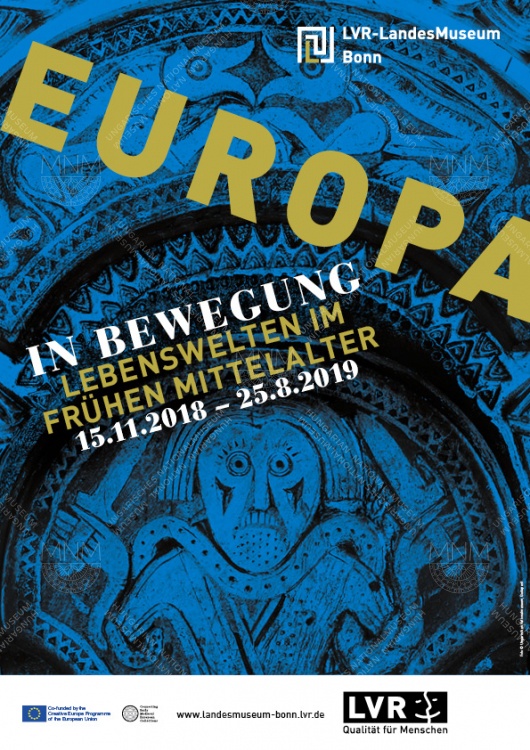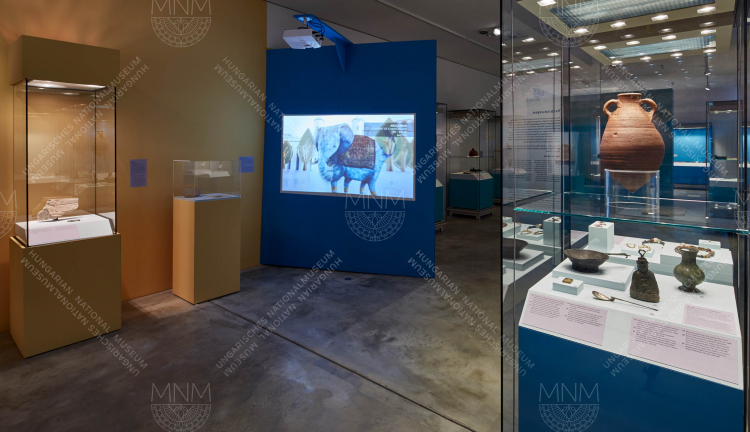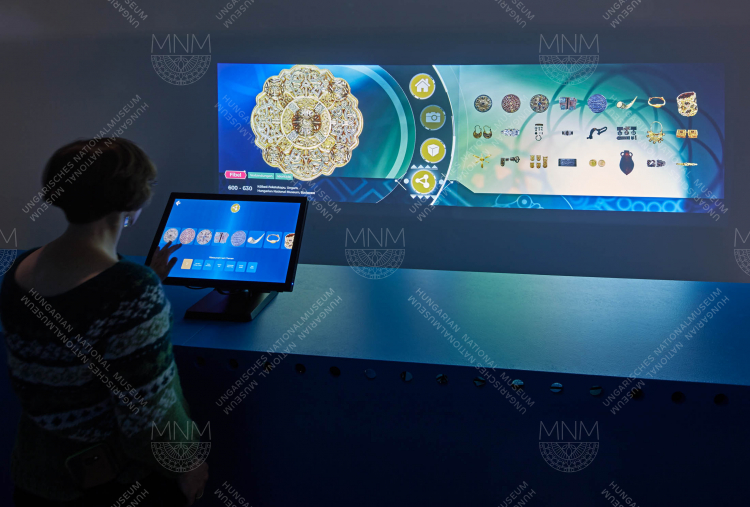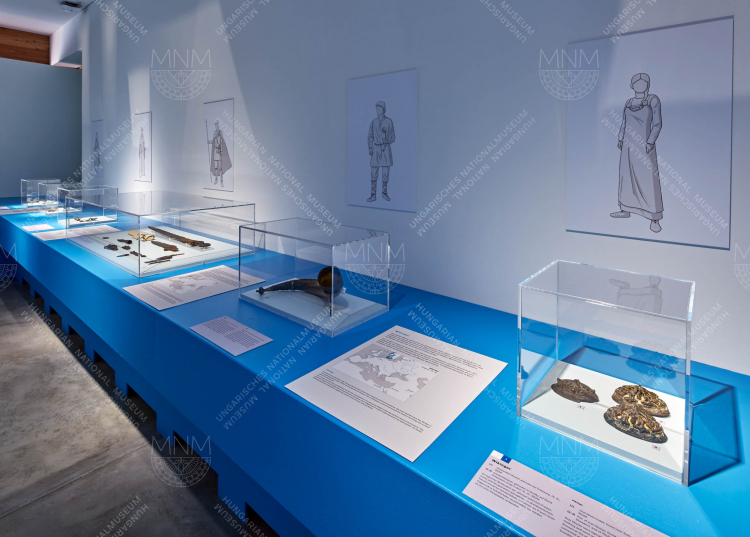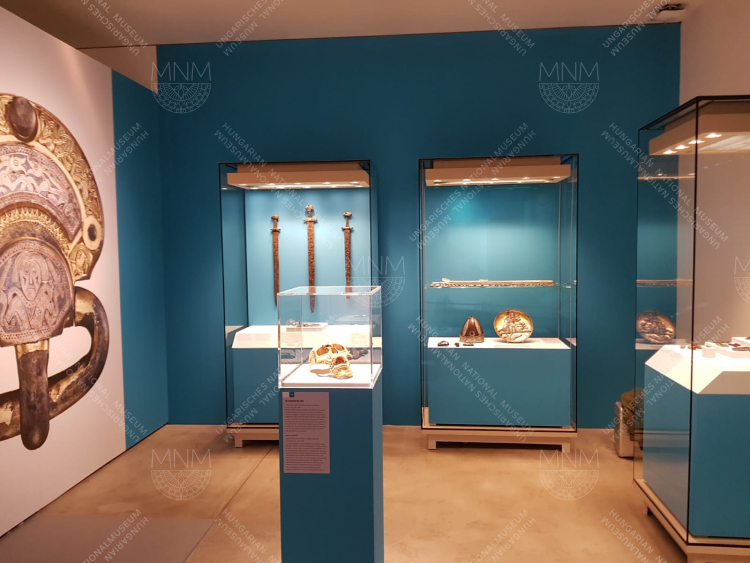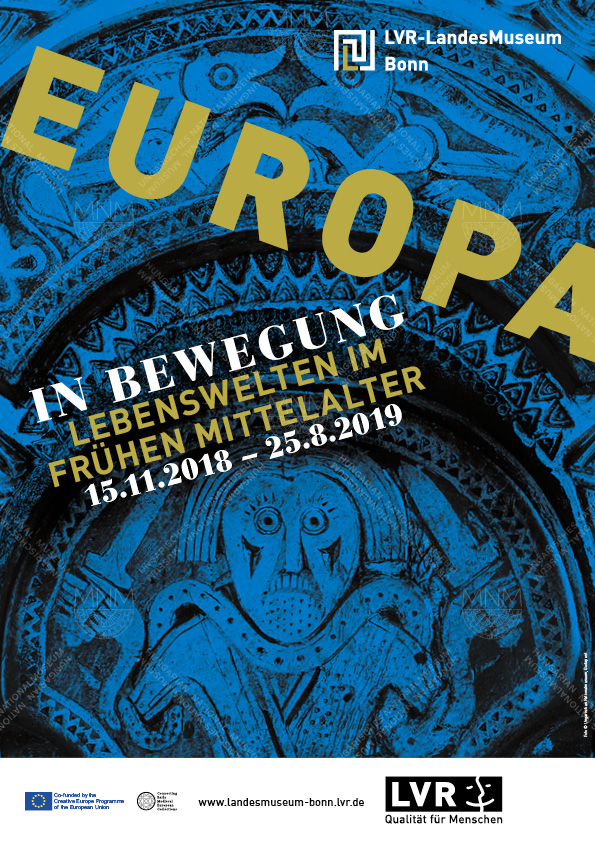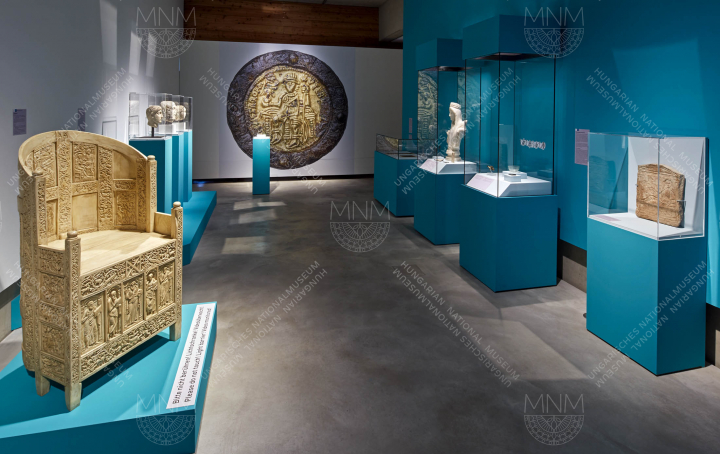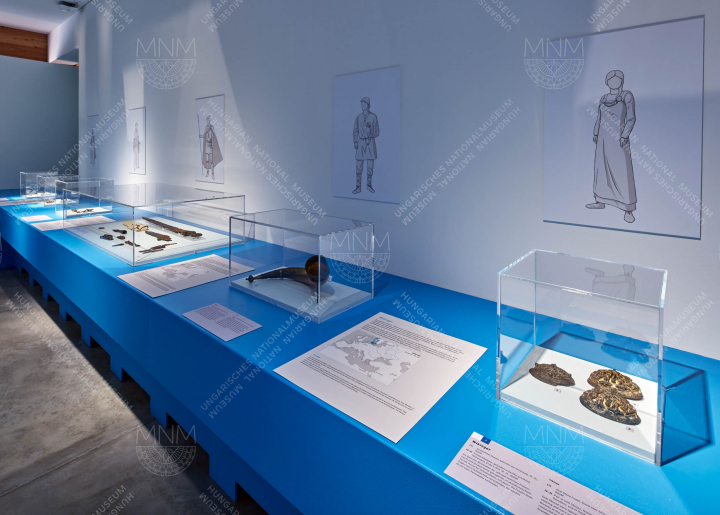
The travelling exhibition created in the framework of the CEMEC – Connecting Early Medieval European Collections - project recently arrived at its third venue in the LVR-LandesMuseum Bonn, Germany, where it will be on show until 25th August 2019 under the title ’ Europa in Bewegung. Lebenswelten im Frühen Mittelalter’. The Hungarian National Museum, as an active participant of the CEMEC consortium, leased several outstanding archaeological artefacts mainly dated to the Avar period (6th to mid8th century A.D.) to the exhibition.
The actuality of the show – and the project itsef – lies in those many paralells which could be drawn between our present day and Europe in the early Middle Ages (Kr. u. 300-1000). This era is often referred to as ’the Dark Ages’ although in reality it was a thrilling and rich period, and similarly to our present day, was also characterized by the movement of peoples over wide geographical distances, the spread of new religions and a constant change in the social and political systems.
The over 300 outsanding early medieval artefacts as well as the innovative digital tools on show help the visitors to understand the network of cultural, social, religious and political connections reaching out all over the continent and forming a basis of modern Europe.
Eight early medieval travellers – historically athentic personalities such as pilgrims, craftsmen, handlers – act as guides to the visitors of the exhibition, adding their personal perspectives of the era they lived in. The exhibited artefacts, ranging from pompous swords to incense-burners, from jewels to vessels made of precious metals or glass, from clothes of fine material to precious codexes, mostly arrived from various cultural institutions of eight European countries participating in the CEMEC project. However, LVR-LandesMuseum Bonn and among others, the Römisch-Germanisches Zentralmuseum in Mainz on the Rhine also contributed by leasing highly valued pieces of their collections.
The show is enriched by digital tools meeting the requirements of 21th century museum visitors: so-called holoboxes allowing a deeper insight into the story and details of outstanding artefacts, the Cross Cultural Timeline, a digital application to present the wide-range connections between artefacts and extra information related to them, contemporary music and spectacular animations.
The European ’tour’ of the Avars does not finish at Bonn. The exhibition showcasing among others the funeral assembly of the Avar chief of Kunágota as well as the precious jewels of the Germanic ladies of Kölked-Feketekapu (both belonging to the Migration Period collection of HNM) will travel to Brussels to be re-opened in the Musée du Cinquantenaire on 26th September 2019.
